#Philipopolis
Explore tagged Tumblr posts
Text
Unseen 3rd Century BC Thracian Temple Discovered by Archaeologists beneath ‘Large Mound’ in Bulgaria’s Plovdiv
The well-preserved ruins of the 3rd century BC Ancient Thracian temple discovered beneath a burial mound in Bulgaria’s Plovdiv. Photo by PodTepeto An Ancient Thracian temple from the 3rd century BC, of a type that has never been seen before, has been unearthed by archaeologists in Bulgaria’s Plovdiv, underneath a massive man-made hill known as “the Large Mound” (“Golyamata Mogila”). The Large…
#Ancient Thrace#Ancient Thracians#Bessi#burial mound#burial mounds#church#excavations#Hellenic#Large Mound (Golyamata Mogila)#Middle Ages#mortar#Odrysian Kingdom#Odrysians#pagan temple#Philipopolis#Plovdiv#Plovdiv Municipality#Plovdiv Museum of Archaeology#Pulpudeva#quadrae#Sapaeans#temple#Thracian temple#Thracians
0 notes
Text

SAINTS SEPTEMBER 29 "There is only one tragedy in this life, not to have been a saint."- Leon Bloy
St. Theodota, Roman Catholic Martyr and penitent, she was converted and refused to obey the decree of the local prefect for all citizens of Philipopolis, Thrace (modern southeast Balkans), to participate in the festival of Apollo. Hundreds of Christians followed her lead, and she was arrested and put to torture, she was finally stoned to death. Feastday Sept 29
September 29th: St Rene Goupil, SJ
St. Rhipsime, Roman Catholic Virgin martyr who was put to death with a group of fellow virgins in Armenia. Brought before King Tiridates. Rhipsime refused the royal favors and was put to death by being roasted alive. Gaiana and all of the other maidens except one, called Christiana, were massacred by Armenian soldiers. Christiana later became a missionary in Georgia. Feastday Sept 29
Bl. Miguel de Aozaraza Roman Catholic Dominican priest. and a Martyr of Japan. Feastday Sept 29
Bl. Richard Rolle de Hampole, 1349 A.D. English mystic and hermit. Born at Thornton, Yorkshire, England, circa 1300, he was educated at Oxford and in Paris from 1320-1326, before entering into the life of a hermit on the estate of a friend, John Dalton of Pickering in 1326. After several years of intense contemplation, he took to wandering across England, finally settling down at Hampole where he assisted the spiritual development of the nuns in a nearby Cistercian community. He died there on September 29. Richard was very well known and his writings widely read during the fourteenth and fifteenth centuries. He was one of the first religious writers to use the vernacular. A cult developed to promote his cause after miracles were reported at his tomb, although the cause was never officially pursued. His works include letters, scriptural commentaries, and treatises on spiritual perfection. Perhaps his best known writing was De Incendio Amoris. He also wrote a poem, Pricke of Conscience.
ST. MICHAEL, ARCHANGEL-St Michael the Archangel is the Prince of the heavenly hosts, always at the head of the angelic legions as they continually battle against the forces of evil. Devotion to St Michael, whose feast is celebrated on September 29th, has universal reach.
ST. RAPHAEL, ARCHANGEL-The cult of archangel Raphael can be traced back to the 11th century; his feast day is celebrated together with that of the archangels Michael and Gabriel. His name comes from the Hebrew “Rafa-El,” or “medicine of El [God],” the opposite of the name of the demon Asmodeus, “he who causes to perish.”
B. NICOLA OF FORCA PALENA, JEROLAMIN
ST. GABRIEL, ARCHANGEL
1 note
·
View note
Photo

Bulgarians stood a great statesman
In the beginning of the 9th century ahead of the Bulgarians stood a great statesman – Khan Krum (803-814) who expanded his kingdom to the north, reaching the Carpathian Mountains. Meanwhile, the Byzantine Emperor Nicephorus I launched an attack against him. In 809 Krum seized the Byzantine fortified citadel of Serdika (Sofia) and made peace proposals to the emperor. Nicephorus turned them down, attacked the capital Pliska with his big army, reduced it to ashes and looted it, then headed back home with the spoils. But the Bulgarians laid an ambush in a mountain pass and on the 25,h of July 811 they defeated the Byzantines.
Nicephorus I himself was killed and the Khan Tour Packages Bulgaria – following an old pagan tradition – plated the emperor’s skull in silver and drank wine from it. As the next peace proposals were rejected again the Bulgarians seized Philipopolis (Plovdiv) and undertook a victorious march to the south. In 813 their cavalry reached the walls of Constantinople. A siege of the Byzantine capital went in preparation, so the new emperor Leo V sent for help from Charlemagne, the Emperor of the Holy Roman Empire. But in the spring of 814 Khan Krum died of a heart attack.
Peace treaty with Byzantium
Krurn’s successor, Khan Omurtag (814-831), concluded a 30-years peace treaty with Byzantium. Then he expanded the territory of the state to the north-east and north-west defeating the Hazars and the Emperor Louis II. Omurtag reconstructed the capital Pliska, enlarged it and ordered the building of several new fortresses. His son Malamir (831-836) and his grandson Presiyan (836- 852), after subjugating some more Slavic tribes, added territories in the southwestern part of the Peninsula – the Rhodopes, Aegean Thrace and South Macedonia – to the Bulgarian state. So in the mid 9th century Bulgaria established itself as the third political power in Europe – after Byzantium and the Holy Roman Empire…
0 notes
Photo

Bulgarians stood a great statesman
In the beginning of the 9th century ahead of the Bulgarians stood a great statesman – Khan Krum (803-814) who expanded his kingdom to the north, reaching the Carpathian Mountains. Meanwhile, the Byzantine Emperor Nicephorus I launched an attack against him. In 809 Krum seized the Byzantine fortified citadel of Serdika (Sofia) and made peace proposals to the emperor. Nicephorus turned them down, attacked the capital Pliska with his big army, reduced it to ashes and looted it, then headed back home with the spoils. But the Bulgarians laid an ambush in a mountain pass and on the 25,h of July 811 they defeated the Byzantines.
Nicephorus I himself was killed and the Khan Tour Packages Bulgaria – following an old pagan tradition – plated the emperor’s skull in silver and drank wine from it. As the next peace proposals were rejected again the Bulgarians seized Philipopolis (Plovdiv) and undertook a victorious march to the south. In 813 their cavalry reached the walls of Constantinople. A siege of the Byzantine capital went in preparation, so the new emperor Leo V sent for help from Charlemagne, the Emperor of the Holy Roman Empire. But in the spring of 814 Khan Krum died of a heart attack.
Peace treaty with Byzantium
Krurn’s successor, Khan Omurtag (814-831), concluded a 30-years peace treaty with Byzantium. Then he expanded the territory of the state to the north-east and north-west defeating the Hazars and the Emperor Louis II. Omurtag reconstructed the capital Pliska, enlarged it and ordered the building of several new fortresses. His son Malamir (831-836) and his grandson Presiyan (836- 852), after subjugating some more Slavic tribes, added territories in the southwestern part of the Peninsula – the Rhodopes, Aegean Thrace and South Macedonia – to the Bulgarian state. So in the mid 9th century Bulgaria established itself as the third political power in Europe – after Byzantium and the Holy Roman Empire…
0 notes
Photo

Bulgarians stood a great statesman
In the beginning of the 9th century ahead of the Bulgarians stood a great statesman – Khan Krum (803-814) who expanded his kingdom to the north, reaching the Carpathian Mountains. Meanwhile, the Byzantine Emperor Nicephorus I launched an attack against him. In 809 Krum seized the Byzantine fortified citadel of Serdika (Sofia) and made peace proposals to the emperor. Nicephorus turned them down, attacked the capital Pliska with his big army, reduced it to ashes and looted it, then headed back home with the spoils. But the Bulgarians laid an ambush in a mountain pass and on the 25,h of July 811 they defeated the Byzantines.
Nicephorus I himself was killed and the Khan Tour Packages Bulgaria – following an old pagan tradition – plated the emperor’s skull in silver and drank wine from it. As the next peace proposals were rejected again the Bulgarians seized Philipopolis (Plovdiv) and undertook a victorious march to the south. In 813 their cavalry reached the walls of Constantinople. A siege of the Byzantine capital went in preparation, so the new emperor Leo V sent for help from Charlemagne, the Emperor of the Holy Roman Empire. But in the spring of 814 Khan Krum died of a heart attack.
Peace treaty with Byzantium
Krurn’s successor, Khan Omurtag (814-831), concluded a 30-years peace treaty with Byzantium. Then he expanded the territory of the state to the north-east and north-west defeating the Hazars and the Emperor Louis II. Omurtag reconstructed the capital Pliska, enlarged it and ordered the building of several new fortresses. His son Malamir (831-836) and his grandson Presiyan (836- 852), after subjugating some more Slavic tribes, added territories in the southwestern part of the Peninsula – the Rhodopes, Aegean Thrace and South Macedonia – to the Bulgarian state. So in the mid 9th century Bulgaria established itself as the third political power in Europe – after Byzantium and the Holy Roman Empire…
0 notes
Photo
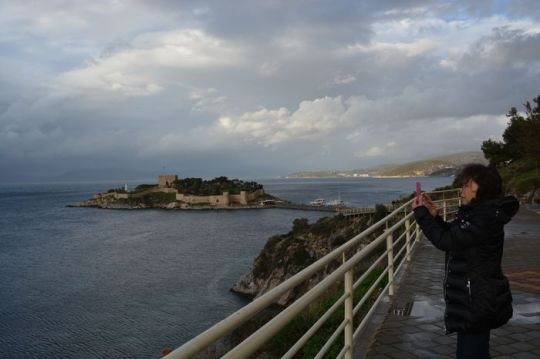
Bulgarians stood a great statesman
In the beginning of the 9th century ahead of the Bulgarians stood a great statesman – Khan Krum (803-814) who expanded his kingdom to the north, reaching the Carpathian Mountains. Meanwhile, the Byzantine Emperor Nicephorus I launched an attack against him. In 809 Krum seized the Byzantine fortified citadel of Serdika (Sofia) and made peace proposals to the emperor. Nicephorus turned them down, attacked the capital Pliska with his big army, reduced it to ashes and looted it, then headed back home with the spoils. But the Bulgarians laid an ambush in a mountain pass and on the 25,h of July 811 they defeated the Byzantines.
Nicephorus I himself was killed and the Khan Tour Packages Bulgaria – following an old pagan tradition – plated the emperor’s skull in silver and drank wine from it. As the next peace proposals were rejected again the Bulgarians seized Philipopolis (Plovdiv) and undertook a victorious march to the south. In 813 their cavalry reached the walls of Constantinople. A siege of the Byzantine capital went in preparation, so the new emperor Leo V sent for help from Charlemagne, the Emperor of the Holy Roman Empire. But in the spring of 814 Khan Krum died of a heart attack.
Peace treaty with Byzantium
Krurn’s successor, Khan Omurtag (814-831), concluded a 30-years peace treaty with Byzantium. Then he expanded the territory of the state to the north-east and north-west defeating the Hazars and the Emperor Louis II. Omurtag reconstructed the capital Pliska, enlarged it and ordered the building of several new fortresses. His son Malamir (831-836) and his grandson Presiyan (836- 852), after subjugating some more Slavic tribes, added territories in the southwestern part of the Peninsula – the Rhodopes, Aegean Thrace and South Macedonia – to the Bulgarian state. So in the mid 9th century Bulgaria established itself as the third political power in Europe – after Byzantium and the Holy Roman Empire…
0 notes
Photo

Bulgarians stood a great statesman
In the beginning of the 9th century ahead of the Bulgarians stood a great statesman – Khan Krum (803-814) who expanded his kingdom to the north, reaching the Carpathian Mountains. Meanwhile, the Byzantine Emperor Nicephorus I launched an attack against him. In 809 Krum seized the Byzantine fortified citadel of Serdika (Sofia) and made peace proposals to the emperor. Nicephorus turned them down, attacked the capital Pliska with his big army, reduced it to ashes and looted it, then headed back home with the spoils. But the Bulgarians laid an ambush in a mountain pass and on the 25,h of July 811 they defeated the Byzantines.
Nicephorus I himself was killed and the Khan Tour Packages Bulgaria – following an old pagan tradition – plated the emperor’s skull in silver and drank wine from it. As the next peace proposals were rejected again the Bulgarians seized Philipopolis (Plovdiv) and undertook a victorious march to the south. In 813 their cavalry reached the walls of Constantinople. A siege of the Byzantine capital went in preparation, so the new emperor Leo V sent for help from Charlemagne, the Emperor of the Holy Roman Empire. But in the spring of 814 Khan Krum died of a heart attack.
Peace treaty with Byzantium
Krurn’s successor, Khan Omurtag (814-831), concluded a 30-years peace treaty with Byzantium. Then he expanded the territory of the state to the north-east and north-west defeating the Hazars and the Emperor Louis II. Omurtag reconstructed the capital Pliska, enlarged it and ordered the building of several new fortresses. His son Malamir (831-836) and his grandson Presiyan (836- 852), after subjugating some more Slavic tribes, added territories in the southwestern part of the Peninsula – the Rhodopes, Aegean Thrace and South Macedonia – to the Bulgarian state. So in the mid 9th century Bulgaria established itself as the third political power in Europe – after Byzantium and the Holy Roman Empire…
0 notes
Photo

Bulgarians stood a great statesman
In the beginning of the 9th century ahead of the Bulgarians stood a great statesman – Khan Krum (803-814) who expanded his kingdom to the north, reaching the Carpathian Mountains. Meanwhile, the Byzantine Emperor Nicephorus I launched an attack against him. In 809 Krum seized the Byzantine fortified citadel of Serdika (Sofia) and made peace proposals to the emperor. Nicephorus turned them down, attacked the capital Pliska with his big army, reduced it to ashes and looted it, then headed back home with the spoils. But the Bulgarians laid an ambush in a mountain pass and on the 25,h of July 811 they defeated the Byzantines.
Nicephorus I himself was killed and the Khan Tour Packages Bulgaria – following an old pagan tradition – plated the emperor’s skull in silver and drank wine from it. As the next peace proposals were rejected again the Bulgarians seized Philipopolis (Plovdiv) and undertook a victorious march to the south. In 813 their cavalry reached the walls of Constantinople. A siege of the Byzantine capital went in preparation, so the new emperor Leo V sent for help from Charlemagne, the Emperor of the Holy Roman Empire. But in the spring of 814 Khan Krum died of a heart attack.
Peace treaty with Byzantium
Krurn’s successor, Khan Omurtag (814-831), concluded a 30-years peace treaty with Byzantium. Then he expanded the territory of the state to the north-east and north-west defeating the Hazars and the Emperor Louis II. Omurtag reconstructed the capital Pliska, enlarged it and ordered the building of several new fortresses. His son Malamir (831-836) and his grandson Presiyan (836- 852), after subjugating some more Slavic tribes, added territories in the southwestern part of the Peninsula – the Rhodopes, Aegean Thrace and South Macedonia – to the Bulgarian state. So in the mid 9th century Bulgaria established itself as the third political power in Europe – after Byzantium and the Holy Roman Empire…
0 notes
Photo
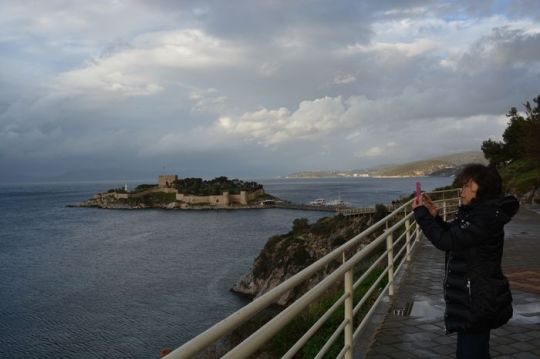
Bulgarians stood a great statesman
In the beginning of the 9th century ahead of the Bulgarians stood a great statesman – Khan Krum (803-814) who expanded his kingdom to the north, reaching the Carpathian Mountains. Meanwhile, the Byzantine Emperor Nicephorus I launched an attack against him. In 809 Krum seized the Byzantine fortified citadel of Serdika (Sofia) and made peace proposals to the emperor. Nicephorus turned them down, attacked the capital Pliska with his big army, reduced it to ashes and looted it, then headed back home with the spoils. But the Bulgarians laid an ambush in a mountain pass and on the 25,h of July 811 they defeated the Byzantines.
Nicephorus I himself was killed and the Khan Tour Packages Bulgaria – following an old pagan tradition – plated the emperor’s skull in silver and drank wine from it. As the next peace proposals were rejected again the Bulgarians seized Philipopolis (Plovdiv) and undertook a victorious march to the south. In 813 their cavalry reached the walls of Constantinople. A siege of the Byzantine capital went in preparation, so the new emperor Leo V sent for help from Charlemagne, the Emperor of the Holy Roman Empire. But in the spring of 814 Khan Krum died of a heart attack.
Peace treaty with Byzantium
Krurn’s successor, Khan Omurtag (814-831), concluded a 30-years peace treaty with Byzantium. Then he expanded the territory of the state to the north-east and north-west defeating the Hazars and the Emperor Louis II. Omurtag reconstructed the capital Pliska, enlarged it and ordered the building of several new fortresses. His son Malamir (831-836) and his grandson Presiyan (836- 852), after subjugating some more Slavic tribes, added territories in the southwestern part of the Peninsula – the Rhodopes, Aegean Thrace and South Macedonia – to the Bulgarian state. So in the mid 9th century Bulgaria established itself as the third political power in Europe – after Byzantium and the Holy Roman Empire…
0 notes
Photo
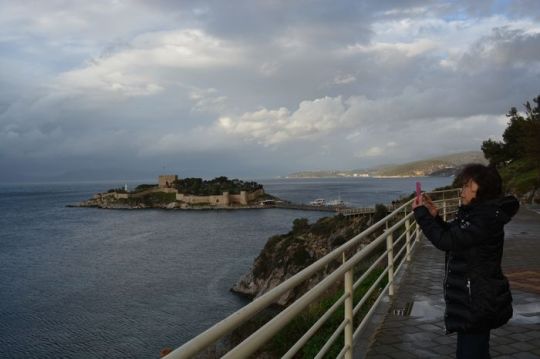
Bulgarians stood a great statesman
In the beginning of the 9th century ahead of the Bulgarians stood a great statesman – Khan Krum (803-814) who expanded his kingdom to the north, reaching the Carpathian Mountains. Meanwhile, the Byzantine Emperor Nicephorus I launched an attack against him. In 809 Krum seized the Byzantine fortified citadel of Serdika (Sofia) and made peace proposals to the emperor. Nicephorus turned them down, attacked the capital Pliska with his big army, reduced it to ashes and looted it, then headed back home with the spoils. But the Bulgarians laid an ambush in a mountain pass and on the 25,h of July 811 they defeated the Byzantines.
Nicephorus I himself was killed and the Khan Tour Packages Bulgaria – following an old pagan tradition – plated the emperor’s skull in silver and drank wine from it. As the next peace proposals were rejected again the Bulgarians seized Philipopolis (Plovdiv) and undertook a victorious march to the south. In 813 their cavalry reached the walls of Constantinople. A siege of the Byzantine capital went in preparation, so the new emperor Leo V sent for help from Charlemagne, the Emperor of the Holy Roman Empire. But in the spring of 814 Khan Krum died of a heart attack.
Peace treaty with Byzantium
Krurn’s successor, Khan Omurtag (814-831), concluded a 30-years peace treaty with Byzantium. Then he expanded the territory of the state to the north-east and north-west defeating the Hazars and the Emperor Louis II. Omurtag reconstructed the capital Pliska, enlarged it and ordered the building of several new fortresses. His son Malamir (831-836) and his grandson Presiyan (836- 852), after subjugating some more Slavic tribes, added territories in the southwestern part of the Peninsula – the Rhodopes, Aegean Thrace and South Macedonia – to the Bulgarian state. So in the mid 9th century Bulgaria established itself as the third political power in Europe – after Byzantium and the Holy Roman Empire…
0 notes
Photo

Bulgarians stood a great statesman
In the beginning of the 9th century ahead of the Bulgarians stood a great statesman – Khan Krum (803-814) who expanded his kingdom to the north, reaching the Carpathian Mountains. Meanwhile, the Byzantine Emperor Nicephorus I launched an attack against him. In 809 Krum seized the Byzantine fortified citadel of Serdika (Sofia) and made peace proposals to the emperor. Nicephorus turned them down, attacked the capital Pliska with his big army, reduced it to ashes and looted it, then headed back home with the spoils. But the Bulgarians laid an ambush in a mountain pass and on the 25,h of July 811 they defeated the Byzantines.
Nicephorus I himself was killed and the Khan Tour Packages Bulgaria – following an old pagan tradition – plated the emperor’s skull in silver and drank wine from it. As the next peace proposals were rejected again the Bulgarians seized Philipopolis (Plovdiv) and undertook a victorious march to the south. In 813 their cavalry reached the walls of Constantinople. A siege of the Byzantine capital went in preparation, so the new emperor Leo V sent for help from Charlemagne, the Emperor of the Holy Roman Empire. But in the spring of 814 Khan Krum died of a heart attack.
Peace treaty with Byzantium
Krurn’s successor, Khan Omurtag (814-831), concluded a 30-years peace treaty with Byzantium. Then he expanded the territory of the state to the north-east and north-west defeating the Hazars and the Emperor Louis II. Omurtag reconstructed the capital Pliska, enlarged it and ordered the building of several new fortresses. His son Malamir (831-836) and his grandson Presiyan (836- 852), after subjugating some more Slavic tribes, added territories in the southwestern part of the Peninsula – the Rhodopes, Aegean Thrace and South Macedonia – to the Bulgarian state. So in the mid 9th century Bulgaria established itself as the third political power in Europe – after Byzantium and the Holy Roman Empire…
0 notes
Text
Massive Hoard of 500 Antiquity Coins Found at Eastern Gate of Ancient Philippopolis in Bulgaria’s Plovdiv
Part of the some 500 Antiquity coins discovered in the rescue digs near the Eastern Gate of Philippopolis in the Old Town of Bulgaria’s Plovdiv. Photo: Radio Plovdiv A massive hoard of some 500 Antiquity coins from different time periods, some of them going back 2,500 years, has been discovered by archaeologists doing rescue excavations close to the eastern gate of the ancient city of Thracian…
#Ancient Rome#Antiquity#archaeologist#billet#bronze coin#bronze coins#ceramic vessels#coin#coins#Desislava Davidova#Eastern Gate of Philipopolis#excavations#gold#Hellenistic Period#inscription#iron lamp#jewelry#lamp#Late Antiquity#Old Town Plovdiv#Philipopolis#Plovdiv#Plovdiv Museum of Archaeology#pottery#rescue excavations#Roman coins#Roman construction#Roman Empire#silver coins#workshop
0 notes
Photo

Bulgarians stood a great statesman
In the beginning of the 9th century ahead of the Bulgarians stood a great statesman – Khan Krum (803-814) who expanded his kingdom to the north, reaching the Carpathian Mountains. Meanwhile, the Byzantine Emperor Nicephorus I launched an attack against him. In 809 Krum seized the Byzantine fortified citadel of Serdika (Sofia) and made peace proposals to the emperor. Nicephorus turned them down, attacked the capital Pliska with his big army, reduced it to ashes and looted it, then headed back home with the spoils. But the Bulgarians laid an ambush in a mountain pass and on the 25,h of July 811 they defeated the Byzantines.
Nicephorus I himself was killed and the Khan Tour Packages Bulgaria – following an old pagan tradition – plated the emperor’s skull in silver and drank wine from it. As the next peace proposals were rejected again the Bulgarians seized Philipopolis (Plovdiv) and undertook a victorious march to the south. In 813 their cavalry reached the walls of Constantinople. A siege of the Byzantine capital went in preparation, so the new emperor Leo V sent for help from Charlemagne, the Emperor of the Holy Roman Empire. But in the spring of 814 Khan Krum died of a heart attack.
Peace treaty with Byzantium
Krurn’s successor, Khan Omurtag (814-831), concluded a 30-years peace treaty with Byzantium. Then he expanded the territory of the state to the north-east and north-west defeating the Hazars and the Emperor Louis II. Omurtag reconstructed the capital Pliska, enlarged it and ordered the building of several new fortresses. His son Malamir (831-836) and his grandson Presiyan (836- 852), after subjugating some more Slavic tribes, added territories in the southwestern part of the Peninsula – the Rhodopes, Aegean Thrace and South Macedonia – to the Bulgarian state. So in the mid 9th century Bulgaria established itself as the third political power in Europe – after Byzantium and the Holy Roman Empire…
0 notes
Photo
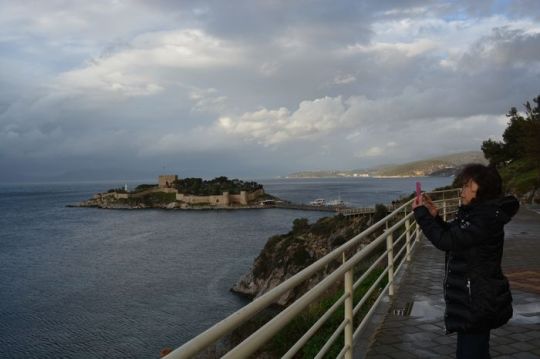
Bulgarians stood a great statesman
In the beginning of the 9th century ahead of the Bulgarians stood a great statesman – Khan Krum (803-814) who expanded his kingdom to the north, reaching the Carpathian Mountains. Meanwhile, the Byzantine Emperor Nicephorus I launched an attack against him. In 809 Krum seized the Byzantine fortified citadel of Serdika (Sofia) and made peace proposals to the emperor. Nicephorus turned them down, attacked the capital Pliska with his big army, reduced it to ashes and looted it, then headed back home with the spoils. But the Bulgarians laid an ambush in a mountain pass and on the 25,h of July 811 they defeated the Byzantines.
Nicephorus I himself was killed and the Khan Tour Packages Bulgaria – following an old pagan tradition – plated the emperor’s skull in silver and drank wine from it. As the next peace proposals were rejected again the Bulgarians seized Philipopolis (Plovdiv) and undertook a victorious march to the south. In 813 their cavalry reached the walls of Constantinople. A siege of the Byzantine capital went in preparation, so the new emperor Leo V sent for help from Charlemagne, the Emperor of the Holy Roman Empire. But in the spring of 814 Khan Krum died of a heart attack.
Peace treaty with Byzantium
Krurn’s successor, Khan Omurtag (814-831), concluded a 30-years peace treaty with Byzantium. Then he expanded the territory of the state to the north-east and north-west defeating the Hazars and the Emperor Louis II. Omurtag reconstructed the capital Pliska, enlarged it and ordered the building of several new fortresses. His son Malamir (831-836) and his grandson Presiyan (836- 852), after subjugating some more Slavic tribes, added territories in the southwestern part of the Peninsula – the Rhodopes, Aegean Thrace and South Macedonia – to the Bulgarian state. So in the mid 9th century Bulgaria established itself as the third political power in Europe – after Byzantium and the Holy Roman Empire…
1 note
·
View note
Text
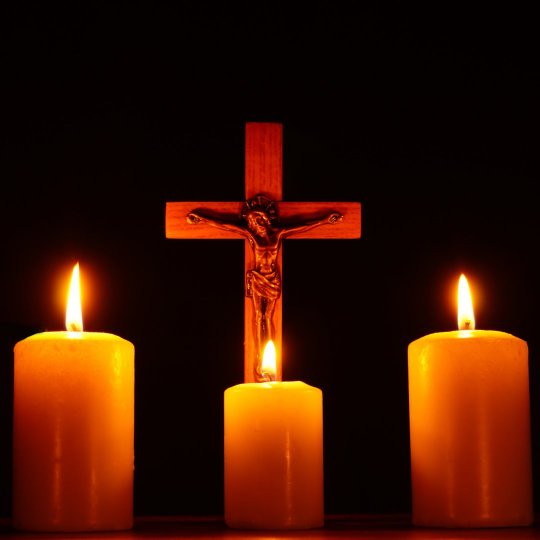
SAINTS AND MARTYRS for September 29
St. Theodota, Roman Catholic Martyr and penitent, she was converted and refused to obey the decree of the local prefect for all citizens of Philipopolis, Thrace (modern southeast Balkans), to participate in the festival of Apollo. Hundreds of Christians followed her lead, and she was arrested and put to torture, she was finally stoned to death. Feastday Sept 29
St. Rhipsime, Roman Catholic Virgin martyr who was put to death with a group of fellow virgins in Armenia. Brought before King Tiridates. Rhipsime refused the royal favors and was put to death by being roasted alive. Gaiana and all of the other maidens except one, called Christiana, were massacred by Armenian soldiers. Christiana later became a missionary in Georgia. Feastday Sept 29
Bl. Miguel de Aozaraza Roman Catholic Dominican priest. and a Martyr of Japan. Feastday Sept 29
B. NICOLA OF FORCA PALENA, JEROLAMIN
Feast of Saints Michael, Gabriel, and Raphael, archangels
Bl. Richard Rolle de Hampole, 1349 A.D. English mystic and hermit. Born at Thornton, Yorkshire, England, circa 1300, he was educated at Oxford and in Paris from 1320-1326, before entering into the life of a hermit on the estate of a friend, John Dalton of Pickering in 1326. After several years of intense contemplation, he took to wandering across England, finally settling down at Hampole where he assisted the spiritual development of the nuns in a nearby Cistercian community. He died there on September 29. Richard was very well known and his writings widely read during the fourteenth and fifteenth centuries. He was one of the first religious writers to use the vernacular. A cult developed to promote his cause after miracles were reported at his tomb, although the cause was never officially pursued. His works include letters, scriptural commentaries, and treatises on spiritual perfection. Perhaps his best known writing was De Incendio Amoris. He also wrote a poem, Pricke of Conscience.
0 notes
Photo










Plovdiv ( Bulgaria )
#plovdiv#visitplovdiv#oldcity#aerodrome#romanruins#romanarchitecture#romanmonuments#romancity#ancientromancity#mosque#ancientstadium#philipopolis#plovdivcity#bulgaria#bulgaricus#bulgariatravel#visitbulgaria#bulgariatrip#travelphotography#travelandarchitecture#aroundtheworld#travel#traveling#explore#adventure#balkantravel#balkan#bulgariabalkan#oldbuildings#bizantine ruins
15 notes
·
View notes